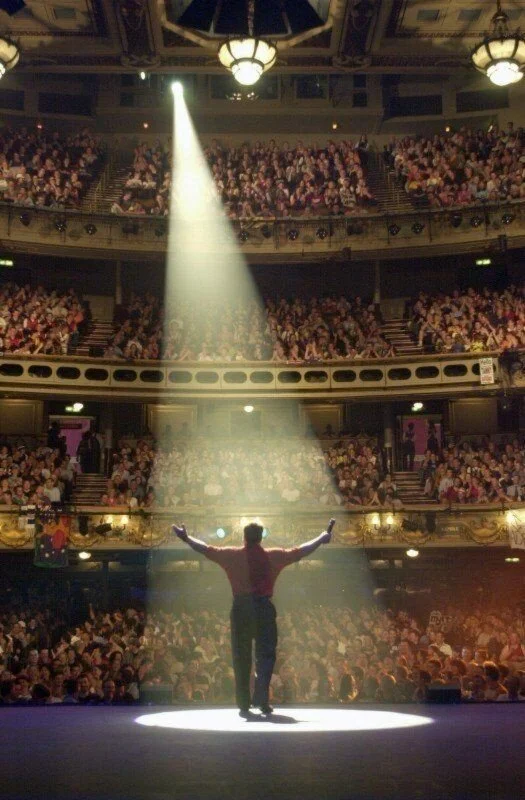The notion of atmosphere
We use the word ‘atmosphere’ daily. It describes the pervading tone or mood of a place or a situation. Therefore, it operates on a hidden level, almost like an aura that cannot be physically perceived, but it can be felt emotionally quite profoundly.
That’s why, lately, I’ve been fascinated with the notion of the atmosphere. The concept of it is particularly related to space, therefore it has a lot to offer to the realm of architecture, which is defined as a special art. We cannot ‘’measure’’ the atmosphere in the interior like we measure, for instance, the ceiling height of the room. It is associated with the emotional tone of the space in the interior setting. Strangely enough, it has a quasi-objective character.
“Scenography would be meaningless if each theatregoer only perceived something subjective”
When talking about an atmosphere, German philosopher Gernot Böhme is a key reference point. He describes the whole concept of the atmosphere as ‘’an emotional climate that prevails in the room’’, and it arises as something between people and things, therefore it can be both produced and perceived (Böhme 2013).
PRODUCING THE ATMOSPHERE
One relevant aspect of the concept of the atmosphere is the fact that it can be staged. Architectural forms, lighting conditions, color schemes, materials, and textures are considered qualities that affect the atmosphere. There are many ’generators of the atmosphere’ such as synaesthesia, light, color, texture, materials, and other qualities that can act as spatial carriers of the moods.
The concept of producing an atmosphere can be found in many areas such as interior architecture, scenography, design, and advertising.
PERCEIVING THE ATMOSPHERE
There is a strong focus on people since, without a sentient subject, there is no atmosphere, however, we have the experience of the atmosphere as something ‘’out there’’ as if it were outside of us. This is explained as the ’inter-subjective’ quality of atmospheres (Kinch 2014), and it is defined as people’s subconscious agreement to a given set of meanings and the character of it. This quasi-objective nature of the atmosphere is demonstrated by the fact that we use the language to describe and communicate it.
BODILY PRESENCE
Another important term is ‘bodily presence’, which Böhme adopted to describe the concept of perceiving the atmosphere, which also means to open oneself emotionally. According to the author, the great importance of the emotional impact of architecture lies in determining our disposition in spaces through our bodily sensing, which indicates that we are bodily present with someone or something in our surroundings.
“A space can affect us as heavy or uplifting, serious and serene, festive, sublime, cool, or cosy, elegant, grand, medieval, and ancient”
CORRELATING THE CONCEPT OF ATMOSPHERE TO THE 4TH INDUSTRIAL REVOLUTION
The 4th industrial revolution is a term invented by Klaus Schwab, a founder and executive chairman of the World Economic Forum. It is characterized by a fusion of technologies that is blurring the lines between the physical, digital, and biological spheres (Min Xu, Jeanne M. David, Suk Hi Kim, 2018).
Compared to previous industrial revolutions, the Fourth one is characterized by workers that produce most goods and services with their mind, instead of their body. Following Böhme’s emphasis on ‘bodily presence’ in perceiving the atmosphere, the idea to experience one’s own corporeality demonstrates that ‘’the need to feel one’s bodily presence is at once the need to feel one’s own liveliness, to feel vitality’’ (Böhme 2013).
“Significant architecture makes us experience ourselves as complete embodied and spiritual beings. In fact, this is the great function of all meaningful art”
Sagrada familia detail, Barcelon | Chad Baori, Rajasthan | Fallingwater House, Pennsylvania | Pantheon, Rome
Here is the big and important question: How to create an emotional correspondence between the interior setting and people who inhabit the space, as we move towards in digital age? We need to take action and discuss how the age of telecommunications and virtual realms can affect our human experience of the world is. After all, “there is a tremendous difference between designing for function and designing for humans” (Cooper, 2004).
“The single word that will drive the future is ‘emotion’. It is the hidden force within every major trend”
Many future forecasts have the idea of under-stimulation of our sensory system in the next few decades. But, alienation from our senses led to emotional detachment as well. ‘’When we experience them less and less, we become unmoved and cold” (Mick Csaky, 1979). However, this new accent on the sensory realm will bring new trends and major changes to the industry. As Li Edelkoort claims, ’’this forecast heralds the coming of a major new industry, not only in clothing but also in interiors, design, gardening, hardware, retail, consumer products, and communications’’.





